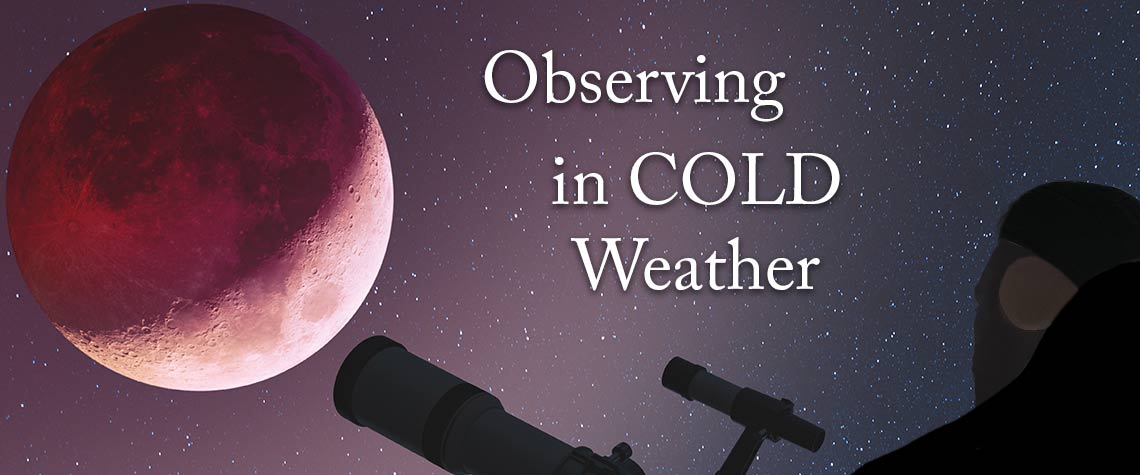Page 4


How to Stay Warm While Observing on Cold Nights
By Ginger Wentrcek
The winter months can provide some of the most beautiful night skies for astronomy lovers. The Great Orion Nebula, Gemini, and the the Pleiades are just three of the outstanding deep sky objects astronomers clamor to see. Our area may not have deep snow falls that are prevalent in the northern states, but temperatures can still plunge below the freezing point and, along with high humidity, can cause some uncomfortable nights if one is not prepared. Just think back to the night of the lunar eclipse in 2019 when temperatures plunged below the freezing mark in the early morning hours and a layer of frost crystals coated the ground.
The following are several steps night sky observers can take to stay warm during a cold night.
Head
Protect your head to prevent heat loss - and don't forget your ears. Cover your head with a warm cap and pull the flap over your ears. If there is no flap, cover your ears with earmuffs.
Face
Use a scarf to protect your face from the wind. Use a ski mask in especially cold weather.
Hands and Fingers
Take care of your hands and fingers by wearing proper gloves. Wear fingerless gloves for optimal mobility to fine tune your telescope or work on your computer. (If you don't have fingerless gloves, cut the fingertips off of a pair of inexpensive gloves.) Then, during periods when you are inactive, wear traditional, warmer gloves.
Torso
Wear layers. Start with a lightweight, long-sleeved layer that will wick away perspiration. A second thicker layer should follow the first layer. This will help retain body heat. Finally, place an outer layer over the first two layers to keep out wind, rain, and other severe weather elements.
Legs
Keep your legs warm by dressing in layers. Start with long underwear and follow that up with thick pants.
Feet
Take care of your feet and take precautions to keep them warm. Wear layers of thick socks, followed by a pair of waterproof boots. Stay away from tennis shoes or other lightweight shoes that cannot keep your feet moisture free.
Finishing Touches
- Take things one step further by placing a chemical heat pack inside your gloves and socks. Give the packet a little shake and in a few seconds, they will produce added heat for your extremities. Be sure to read the packet directions for safety precautions.
- A fluffy warm blanket can add another layer of protection, if needed.
- A thermos of hot coffee or hot chocolate wouldn't hurt, either.